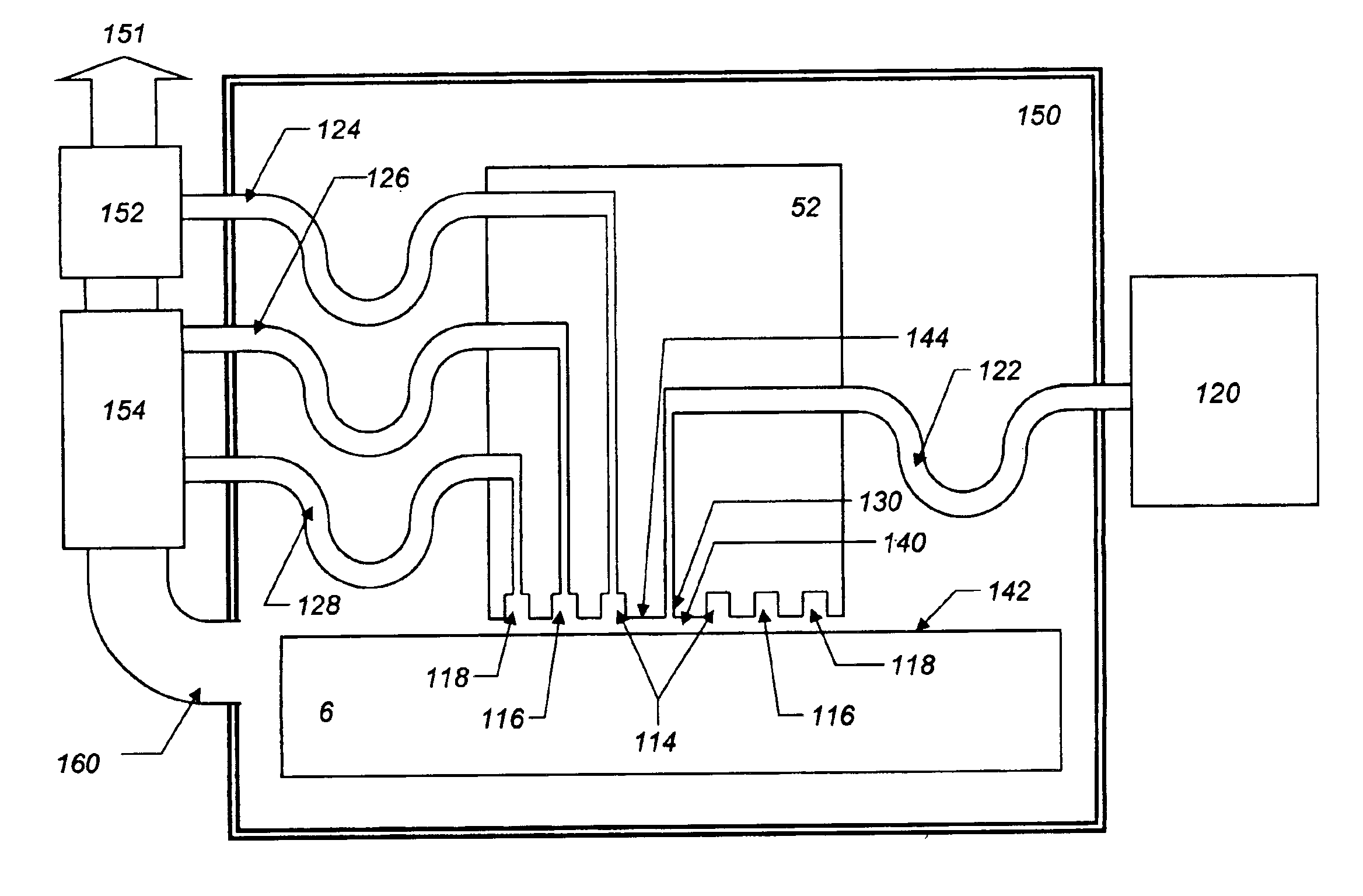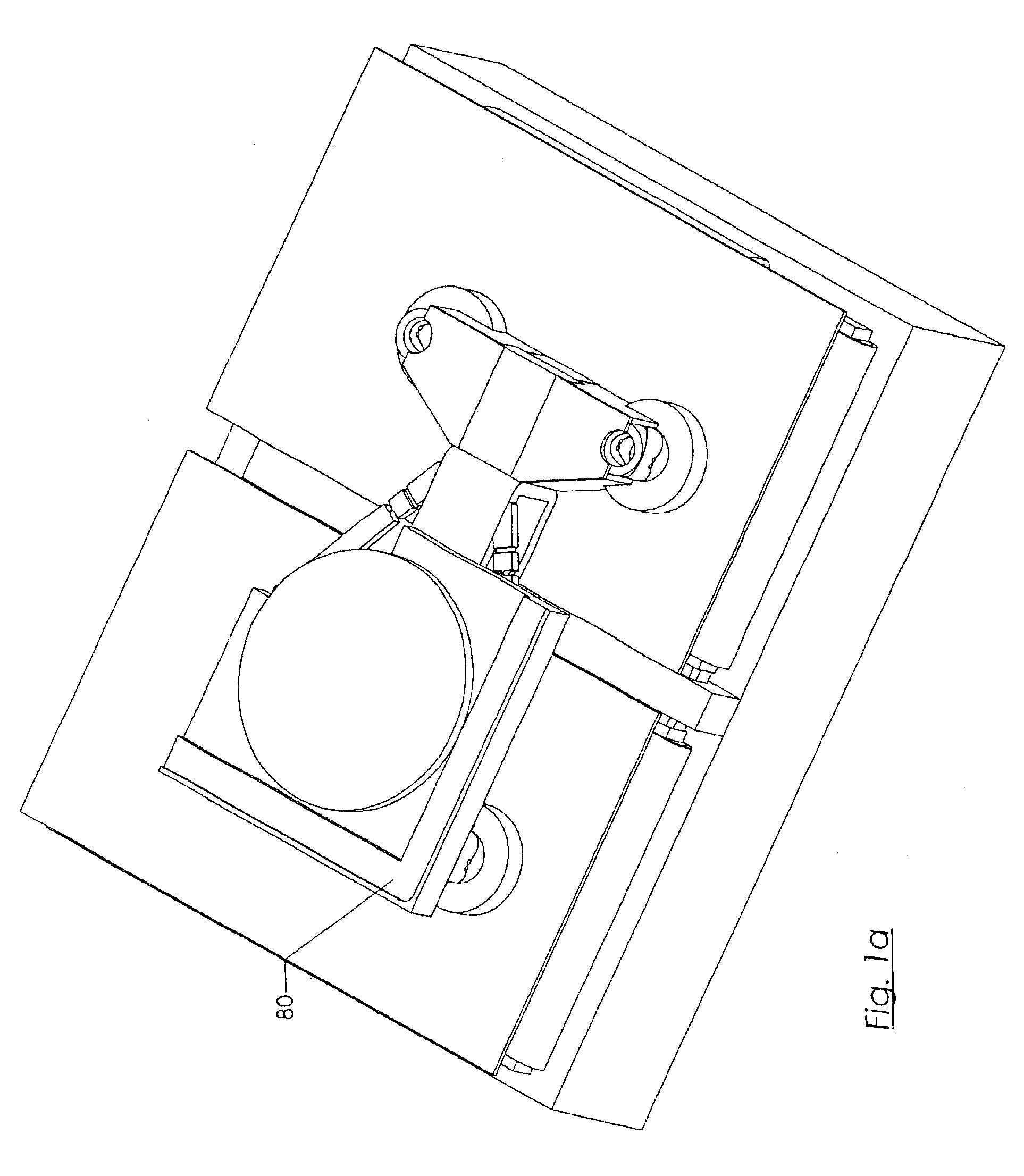Positioning device
- Summary
- Abstract
- Description
- Claims
- Application Information
AI Technical Summary
Benefits of technology
Problems solved by technology
Method used
Image
Examples
Embodiment Construction
[0034]The preferred embodiment includes a base structure 6 (FIG. 3), which forms the stage stator. This is the part of the stage that is nominally stationary. The base structure 6 includes a rigid structural base plate 8, to which are mounted two coil assemblies 10 and 11. Each coil assembly consists of a soft magnetic core 12, which readily conducts magnetic flux, and a pair of wire coils 14 and 16 wound in orthogonal directions about the core. A connector made of soft magnetic material 18 creates a magnetic flux bridge between the cores of the two coil assemblies. A plate of nonmagnetic and nonconducting material 19 (shown as transparent to reveal the coil assemblies) covers the coils to provide a hard, smooth and nominally flat surface for the movable portion of the gas bearings to glide on.
[0035]The moving part of the stage, referred to as the carriage 20 (FIGS. 2, 2a), contains two permanent magnets 30 and 32, one with its north pole facing a coil assembly, and the other with i...
PUM
 Login to View More
Login to View More Abstract
Description
Claims
Application Information
 Login to View More
Login to View More - R&D
- Intellectual Property
- Life Sciences
- Materials
- Tech Scout
- Unparalleled Data Quality
- Higher Quality Content
- 60% Fewer Hallucinations
Browse by: Latest US Patents, China's latest patents, Technical Efficacy Thesaurus, Application Domain, Technology Topic, Popular Technical Reports.
© 2025 PatSnap. All rights reserved.Legal|Privacy policy|Modern Slavery Act Transparency Statement|Sitemap|About US| Contact US: help@patsnap.com



